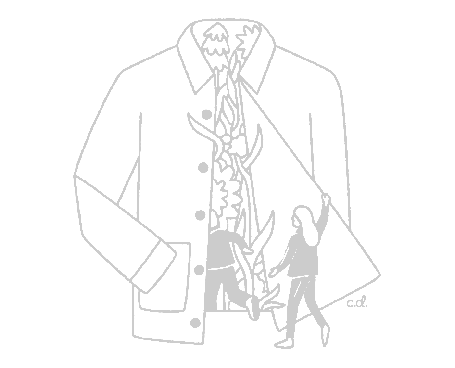By Sam Trotman (aka @samutaro)
Images used throughout are sourced from various online sources.

Over the last century, there have been many examples of workwear styles that, with the help of a functional, utilitarian design, have transcended their industrial roots to become contemporary fashion mainstays. Levi’s five pocket jean might be the most iconic item in its archive, but the denim jacket has become just as coveted.
Worn by laymen, greasers, cowboys, hippies, rock stars, and rappers alike, the denim jacket has become a symbol of America’s sartorial history - one that represents change, independence and freedom.
Much like the 501 jeans, the evolution of the denim jacket's three archetypal patterns was subtle but nonetheless groundbreaking, with each style bonding with popular culture in it’s own individual way. For over a century, this trio of designs have provided a blueprint for denim design that is replicated by fashion houses all over the world.
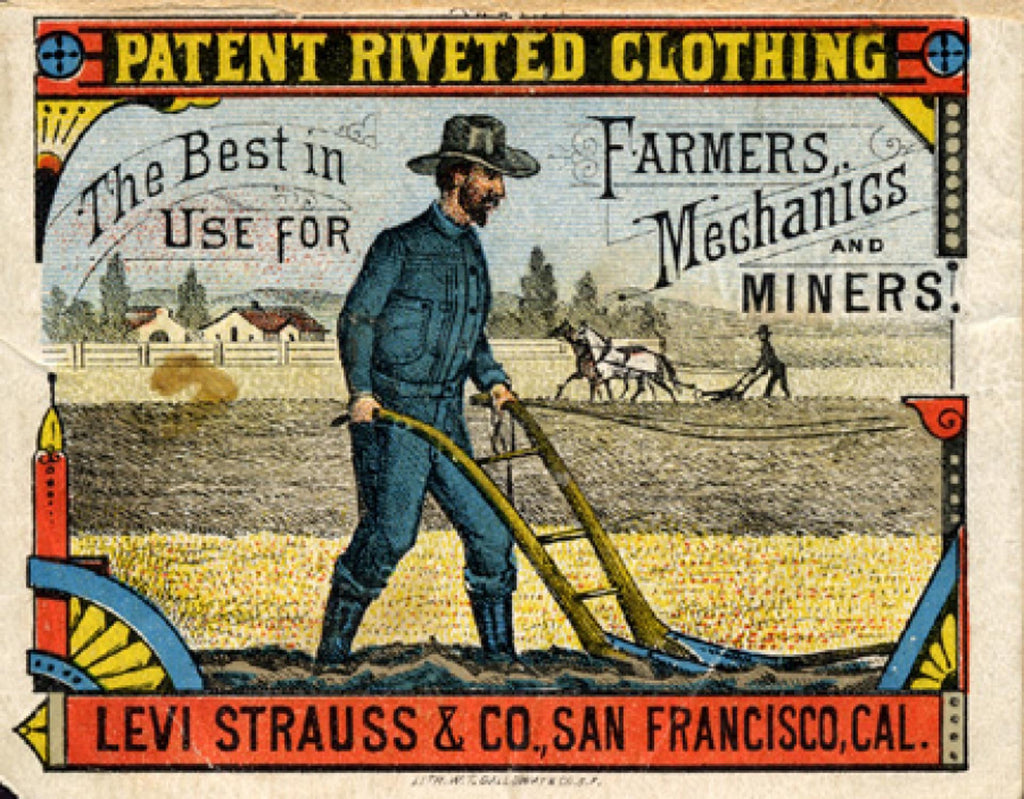
The origins of the Trucker can be traced back to around 1905, when Levi Strauss created the Levi Blouse (otherwise known by its production code 506), a top half piece intended to accompany his famed blue jeans, and cut from the same unsanforized 9 oz. ‘double heavy extra strong quality’, or XX, denim. It’s design was simple yet practical: short and boxy to allow for ease of movement, with double pleats running down the front. The stitches across the pleats could be removed to give the wearer extra room. A single piped chest pocket and silver buckle cinch at the lower back rounded off the look, but these details would be modified for later models in the form of an additional buttoned flap for the pocket, and a bronze cinch buckle. The ‘Blouse’ moniker would remain in place until 1938, when the switch to ‘jacket’ was made in the Dude Ranch Duds western wear catalog, although it had been first referred to as Number One (hence Type I) over 20 years prior, in 1917.
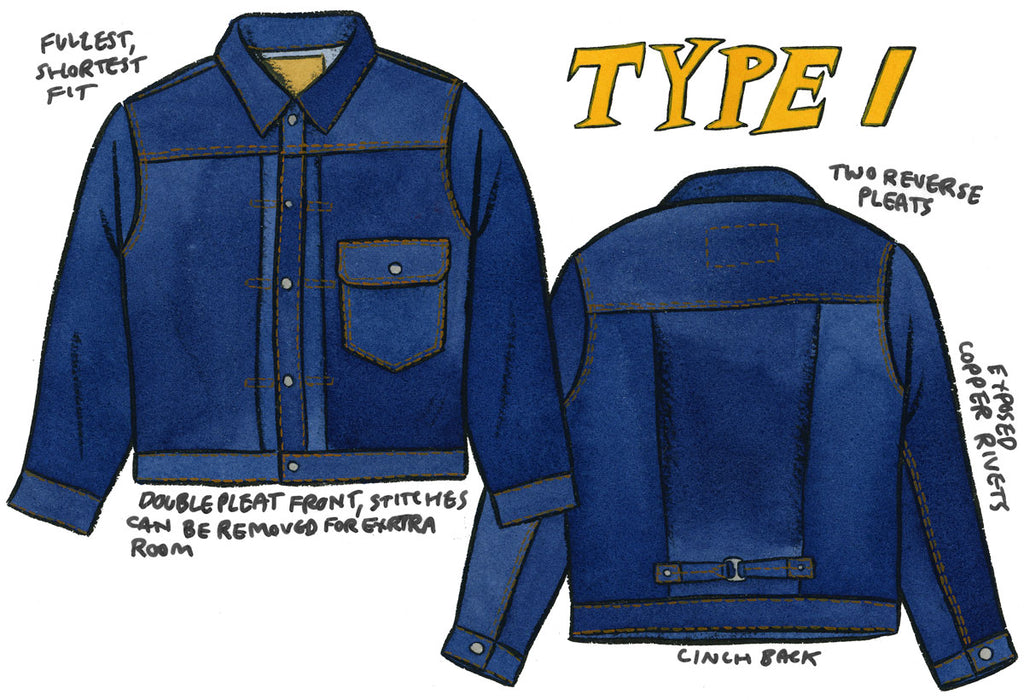
Six variations of the Type I were produced over a forty year period, but it wasn’t until 1936 that the legendary red tab began to appear at the pocket, in its original ‘Big E’ form. As the 1940s dawned, the design would be tweaked again, doing away with unnecessary embellishments in a bid to ration materials during World War II, but it was also around this time that celebrities and notable figures such as Big Crosby and Robert Mitchum began to don the jacket, giving it it’s first cool credentials of the rebel era. Crosby’s infatuation with Levi’s would be cemented with the commissioning of an all-denim ‘Canadian’ tuxedo.
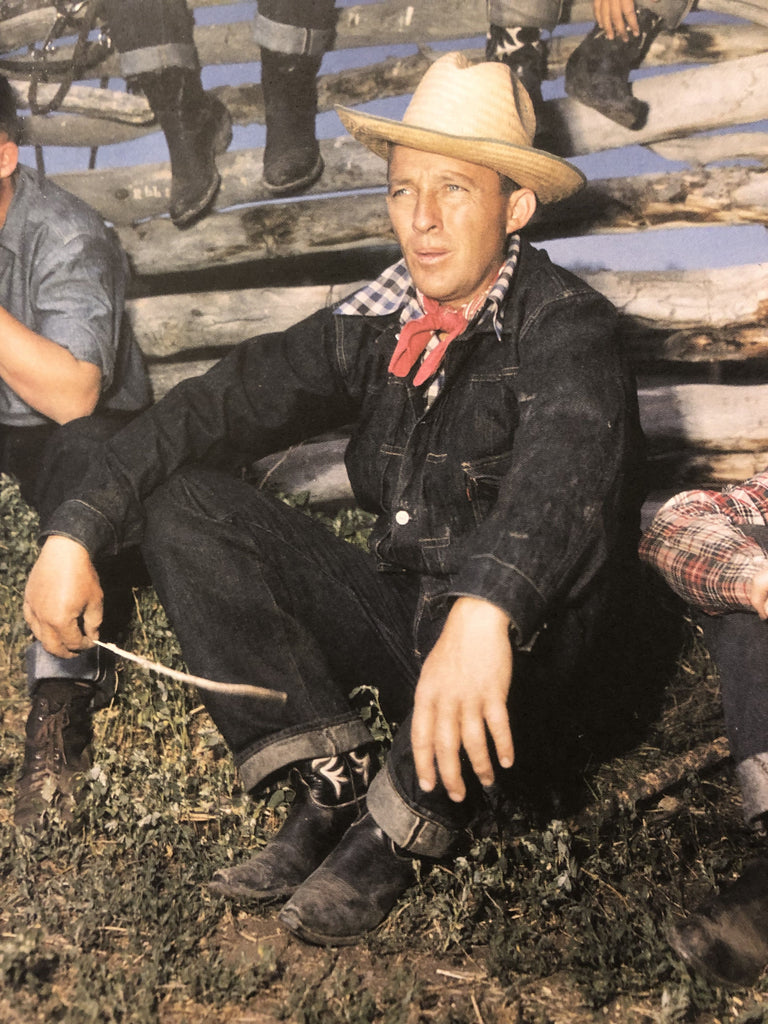
Legend has it Crosby had the set made in reaction to an incident in 1951 where he was denied check-in at an upscale Canadian hotel due to the fact that he was underdressed, wearing a denim-on-denim outfit.

With the new decade came a new Trucker shape: the 507XX, otherwise known as the Type II, was released by Levi’s in 1953. A whole new generation of young people were embracing denim, transforming it from exclusive labourer attire into the quintessential uniform for rebellious teenagers coast to coast. The sophomore jacket retained the overall shape of the Type I, albeit less boxy and slightly longer, and added a second chest pocket (this time reinforced with bar tacks instead of rivets) as well as swapping the cinch back for buttoned waist adjusters. Initially, the jackets were produced with leather two-horse neck tags, although these were changed to the more familiar paper tags to meet production targets.

The shift in the cultural zeitgeist had been largely in thanks to burgeoning youth subcultures and the rise of the Rock and Roll music movement, and with superstars including Elvis Presley endorsing the Type II, it’s appeal stretched beyond the U.S. and into other parts of the world. The look and attitude of the time was epitomised by Martin Sheen’s character in 1973’s cult rebel movie Badlands, who spends the duration of the film dressed in a beaten up 507xx with matching 501s.

Though the Type II was a favourite for rebels and workers alike, it’s also notorious for its relatively short production run; Levi’s ceased production in 1962 after just nine years, which only further bolstered it’s cult status.
Rather than just a rare denim jacket, it is perceived by collectors as a symbol for one of the most important periods in the history of denim.
Originals can fetch several thousand dollars on auction sites. Streetwear pioneers like James Jebbia and Nigo are well known for their adoration of early Levi’s pieces, particularly the jackets, with the latter even collaborating with the brand earlier this year on a replica of his personal Type II, in all it’s shredded beauty. The pattern of Japanese discernment over Levi’s is further evident in the number of vintage collectors, who have often come into possession of Levi Strauss artefacts that even the brand themselves are missing from their vaults. In fact, it was actually Japanese denim enthusiasts who coined the ‘Trucker’ term in the eighties. Tokyo-based denim specialist Yukata Fujihara has widely documented this history in a series of archive books focusing first on the 501xx, and more recently on vintage Levi’s jackets.

Upon the discontinuation of the Type II, Levi’s wasted no time in putting out a successor. The Type III, or 557, was introduced that same year, after being sketched out by designer Jack Lucifer, son of the woven red tab label creator Chris Lucifer. Eliminating staple detailing such as pleats and rivets, Lucifer went about creating a more slimmed down silhouette by fashioning two V seams to run over the pockets and toward the hem. The pockets themselves were altered to sit higher up the chest, smaller with a pointed flap. The new shape sat perfectly in the slim-fit fashion landscape of the time, and was renamed Lot Number 70505 in 1967 (matching the newly released zip fly 505 jeans) and is still known by this code today. Hand pockets were added in the 1980s and completed this now classic archetype denim jacket shape. Other variations such as flannel and blanket lined versions were issued in the nineties, and the brand even released a ‘Relaxed Trucker’ with a looser cut to keep up with the baggy trends that were dominating the era.

Credit: Michael Crabtree, Alamy Images.
Despite increasingly fierce competition from other denim brands, Levi’s were able to remain ever relevant by aligning themselves with popular youth subcultures of the period such as Grunge and Britpop, and rockstars Kurt Cobain and Liam Gallagher would often throw on a Trucker jacket to finish their much-copied looks. In the mid nineties, aware of the blossoming vintage market of the Far East, Levi’s added a premium heritage line, Levis Vintage Clothing, which sought to reproduce iconic garments with meticulous detail. The Type I and II were brought back, resplendent in raw selvedge denim glory. The cinch back was even revived for the Engineered series in 1999, where the Trucker received updated, cleaner panelling and also used a 501 back pocket on the chest.
Since denim jackets made a mainstream resurgence in the mid to late 2000s, the Trucker’s allure has showed no signs of diminishing, with a renewed interest in vintage Big E originals as well as the faithful LVC reissues being peddled by their association with rap megastars, namely Kanye West and Pharrell Williams. Virgil Abloh, is also frequently seen wearing them, even having a Type III named after him in 2020.

The Trucker jacket is undoubtedly one of mainstream fashion’s most enduring styles. The fact that it’s pattern is copied by just about every other brand who works with denim is a testament to the genius simplicity and versatility of it’s design. Be it swapping out fabrics for collaborations, deconstructing silhouettes for fashion-forward subsidiaries or dipping into the seemingly endless archives for premium repro lines, Levi’s has consistently managed to reinvent one of it’s core products and keep it relevant, lending a lot of truth to the old adage that quality and timeless design truly never goes out of style.
Written by Sam Trotman (aka @samutaro)
Samutaro is an Instagram page that sits at the intersection of fashion, art and pop culture. More than an online mood board, the page inspires and educates through compelling narratives that draw the lines between past, present and future.
...
Batch No.9 - The Japanese Denim Jacket
Thanks to Sam's essay, you'll now have a good understanding of the history of the legendary denim jacket.
When we were doing our own research, we thought the evolution from a Type I to a Type II seemed very natural, but the jump from Type II to III was quite drastic.
So we wanted to design a jacket that we thought would have been the natural evolution between the Type II and III. A sort of Type II ½.
The style would be inspired by the cult Type II from the 50's, but with the fit of the more modern Type III trucker jacket. It's a pairing we hadn't seen before and one we're very excited about. And of course, we've added plenty of details of our own.
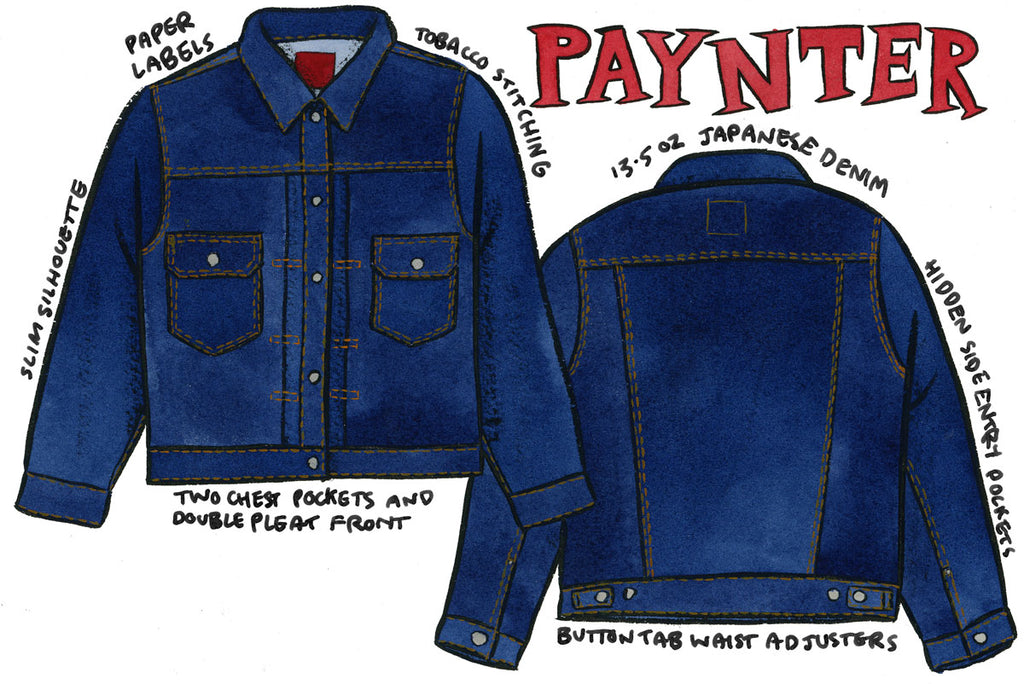

Batch No.9 will be released on the 9th of October at 9AM (BST). Subscribe to our newsletter for more info.
Illustrations by Dick Carroll.



